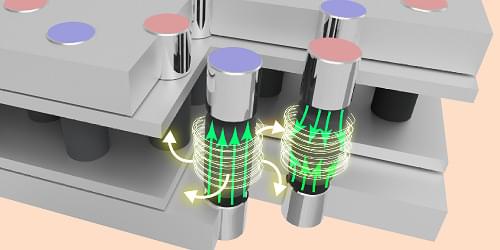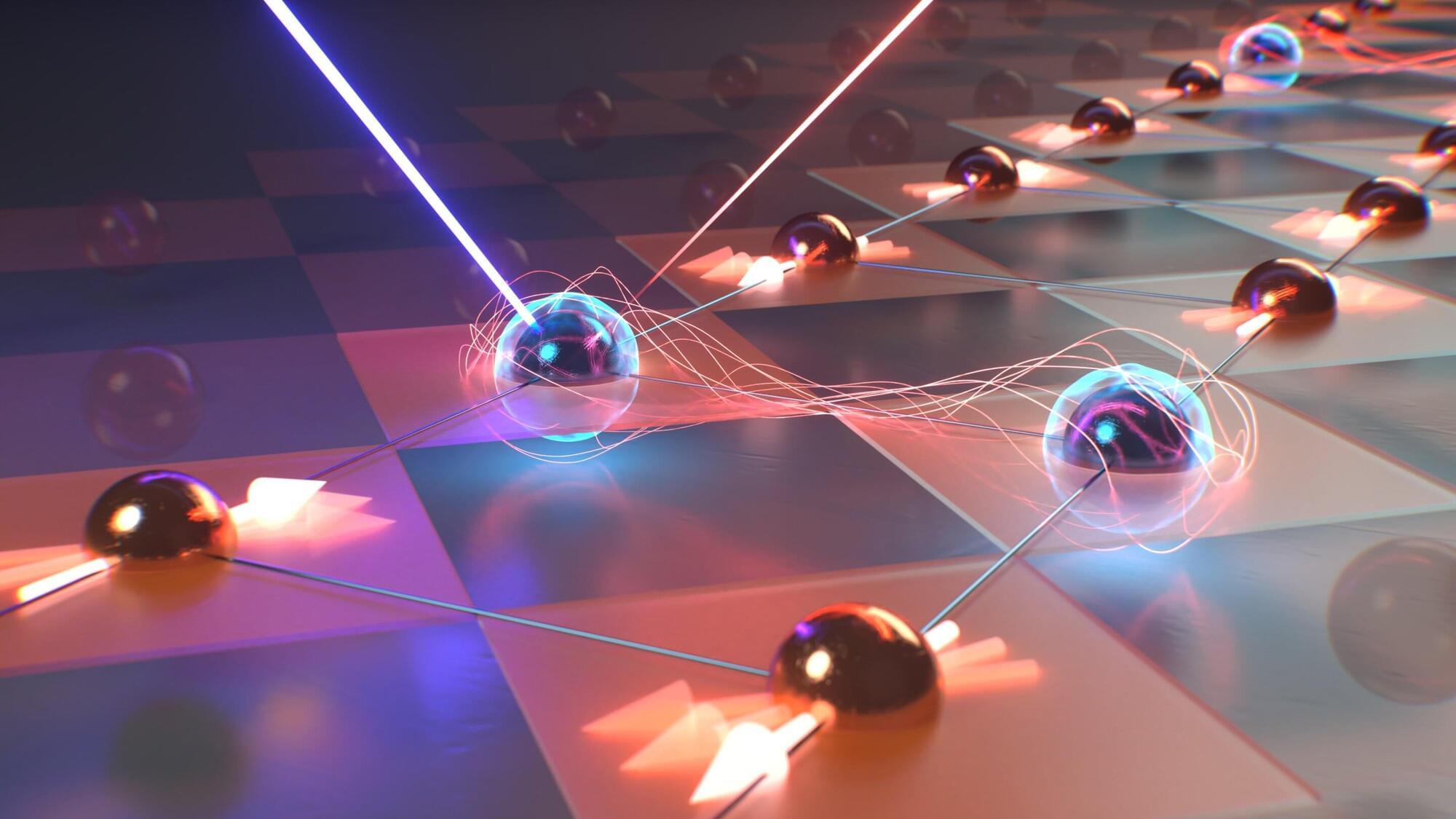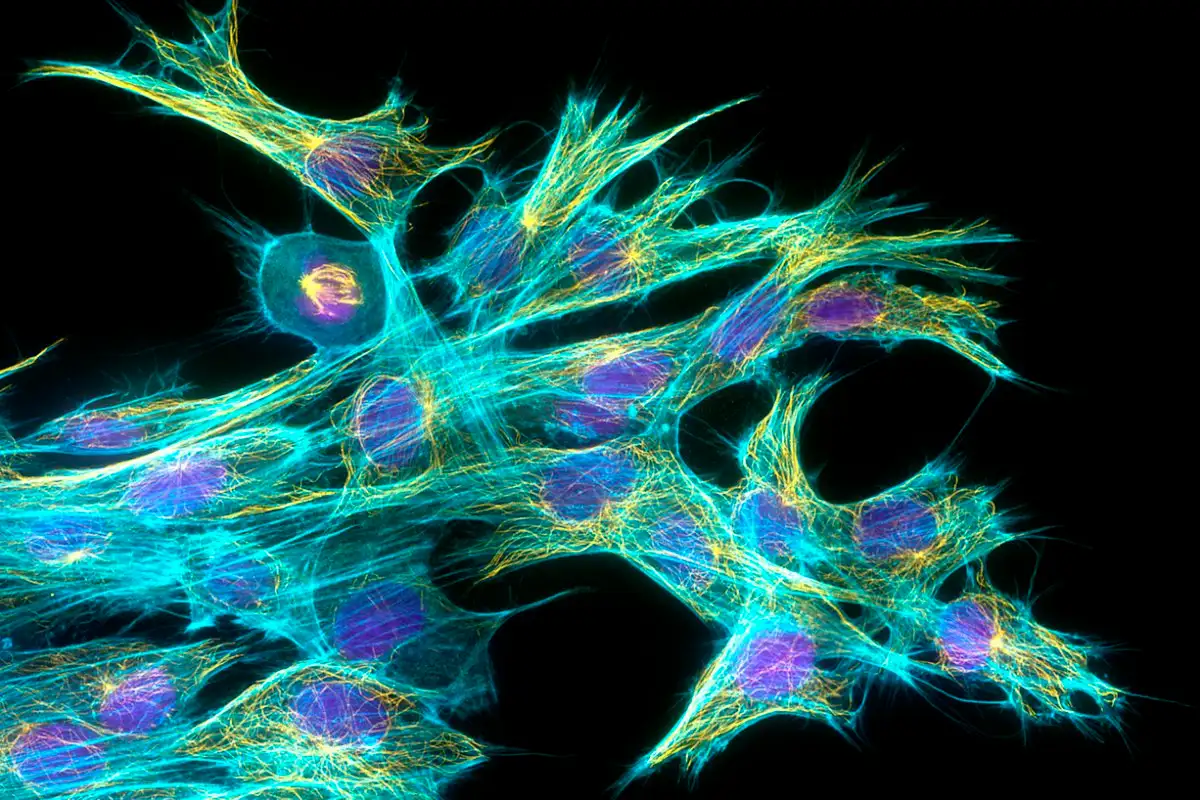In a global first, US scientists demonstrate quantum encryption in a live nuclear reactor using quantum key distribution approach.
Category: quantum physics – Page 85

Enter the Photonic Chern Semimetal
Among the crystalline materials whose edges host exotic quantum states are the Dirac semimetal and the Chern insulator. In the semimetal, the edge states are localized and not protected from perturbations by their topology; in the insulator, they move in one direction and are protected. Proposed by theorists in 2011, a hybrid phase called a Chern semimetal simultaneously hosts localized and one-way edge states, both with topological protection (see Synopsis: Quantum Hall Anomaly in 3D). Now Jianfeng Chen and Cheng-Wei Qiu at the National University of Singapore and their colleagues have realized this phase in a two-dimensional photonic metamaterial [1]. The researchers say that their system provides a platform for nanophotonic applications and a playground for topological physics.
The researchers built a honeycomb-shaped, single-layer array of millimeter-sized magnetic rods. They then applied a carefully tuned, spatially varying magnetic field to this array, creating a pattern in which only specific rods were magnetized. Lastly, they placed a source of microwaves at the array’s boundary and observed how the microwave radiation traveled through the structure. The team found that the magnetization pattern caused some radiation to localize at the array’s boundary and other radiation to move in one direction around the boundary. All these edge states were topologically protected in that they were immune to scattering caused by slight differences in the alignment, shape, and size of the rods and other material imperfections.
Thanks to the coexistence and potential hybridization of localized and one-way states, a photonic Chern semimetal can reduce the speed of transmitted radiation. The researchers found that their metamaterial exhibited a slowdown factor of up to 30 while preserving the radiation’s topological protection. They say that this capability could be useful for nanophotonic technology.

Quantum state lifetimes extended by laser-triggered electron tunneling in cuprate ladders
Quantum materials exhibit remarkable emergent properties when they are excited by external sources. However, these excited states decay rapidly once the excitation is removed, limiting their practical applications.
A team of researchers from Harvard University and the Paul Scherrer Institute PSI have now demonstrated an approach to stabilize these fleeting states and probe their quantum behavior using bright X-ray flashes from the X-ray free electron laser SwissFEL at PSI. The findings are published in the journal Nature Materials.
Some materials exhibit fascinating quantum properties that can lead to transformative technologies, from lossless electronics to high-capacity batteries. However, when these materials are in their natural state, these properties remain hidden, and scientists need to gently ask for them to pop up.

The quantum physics of forgetting information
In a study by TU Wien and FU Berlin, researchers have measured what happens when quantum physical information is lost. This clarifies important connections between thermodynamics, information theory and quantum physics.
Heat and information—these are two very different concepts that, at first glance, appear to have nothing to do with each other. Heat and energy are central concepts in thermodynamics, an important field of physics and even one of its cornerstones. Information theory, on the other hand, is an abstract topic in mathematics.
But as early as the 1960s, physicist Rolf Landauer was able to show that the two are closely related: the deletion of information is inevitably linked to the exchange of energy. You cannot delete a data storage device without releasing heat to the outside world.

Physicists figure out how an electric field can switch off superconductivity
Transistors are fundamental to microchips and modern electronics. Invented by Bardeen and Brattain in 1947, their development is one of the 20th century’s key scientific milestones. Transistors work by controlling electric current using an electric field, which requires semiconductors. Unlike metals, semiconductors have fewer free electrons and an energy band gap that makes it harder to excite electrons.
Doping introduces charge carriers, enabling current flow under an electric field. This allows for nonlinear current-voltage behavior, making signal amplification or switching possible, as in p–n junctions. Metals, by contrast, have too many free electrons that quickly redistribute to cancel external fields, preventing controlled current flow—hence, they can’t be used as traditional transistors.
However, recent advances show promise in ultrathin superconducting metals as potential transistor materials. When cooled below a critical temperature, these materials carry current with zero resistance. This behavior arises from the formation of Cooper pairs—electrons bound by lattice vibrations—that condense into a coherent quantum state, immune to scattering and energy loss.

“Quantum OS Is Here”: New Operating System Unlocks Full Power of Quantum Computers and Signals the Dawn of a New Era
IN A NUTSHELL 🔬 Researchers have developed QNodeOS, an innovative operating system that unifies different quantum computing technologies. 🌐 QNodeOS features two main units, the CNPU and QNPU, which simplify the management of diverse quantum devices through a single interface. 🔑 The QDriver acts as a translator, converting universal instructions into specific commands for various


Physicists recreate extreme quantum vacuum effects
Using advanced computational modeling, a research team led by the University of Oxford, working in partnership with the Instituto Superior Técnico at the University of Lisbon, has achieved the first-ever real-time, three-dimensional simulations of how intense laser beams alter the “quantum vacuum”—a state once assumed to be empty, but which quantum physics predicts is full of virtual electron-positron pairs.
Excitingly, these simulations recreate a bizarre phenomenon predicted by quantum physics, known as “vacuum four-wave mixing.” This states that the combined electromagnetic field of three focused laser pulses can polarize the virtual electron-positron pairs of a vacuum, causing photons to bounce off each other like billiard balls—generating a fourth laser beam in a “light from darkness” process. These events could act as a probe of new physics at extremely high intensities.
“This is not just an academic curiosity—it is a major step toward experimental confirmation of quantum effects that until now have been mostly theoretical,” said study co-author Professor Peter Norreys, Department of Physics, University of Oxford.

Electron Handedness in a Material
A new framework for studying chiral materials puts the emphasis on electron chirality rather than on the asymmetry of the atomic structure.
Chirality is a fundamental feature of nature, manifesting across scales—from elementary particles and molecules to biological organisms and galaxy formation. An object is considered chiral if it cannot be superimposed on its mirror image. In condensed-matter physics, chirality is primarily viewed as a structural asymmetry in the spatial arrangement of atoms within a crystal lattice [1]. A perhaps less familiar fact is that chirality is also a fundamental quantum property of individual electron states [2]. Now, Tatsuya Miki from Saitama University in Japan and colleagues introduce electron chirality as a framework to quantify symmetry breaking in solids, focusing on chiral and related axial materials [3]. The researchers propose a way of measuring electron chirality with photoemission spectroscopy.

Producing superconductors for quantum circuit elements at high temperatures
A project led by the University of Melbourne’s Dr. Manjith Bose and Professor Jeff McCallum, who are also members of the ARC Center of Excellence for Quantum Computation and Communication Technology, has identified a promising class of superconductors that may potentially avoid the need for high levels of cryogenic cooling. These advanced materials can be manufactured, be integrable and be compatible using standard silicon and superconducting electronics approaches.
To optimize the growth of these silicide superconductors, Dr. Bose and Prof. McCallum are making extensive use of high–temperature neutron reflectometry on the Spatz reflectometer at ANSTO’s Australian Center for Neutron Scattering.
Neutrons are an ideal tool for exploring extreme sample environments, such as the high pressure, temperatures or fields that are present when manufacturing circuit elements. This is because neutrons can penetrate through most common metals, allowing one to see reflective thin films deep inside furnaces, magnets and cryo-chambers.